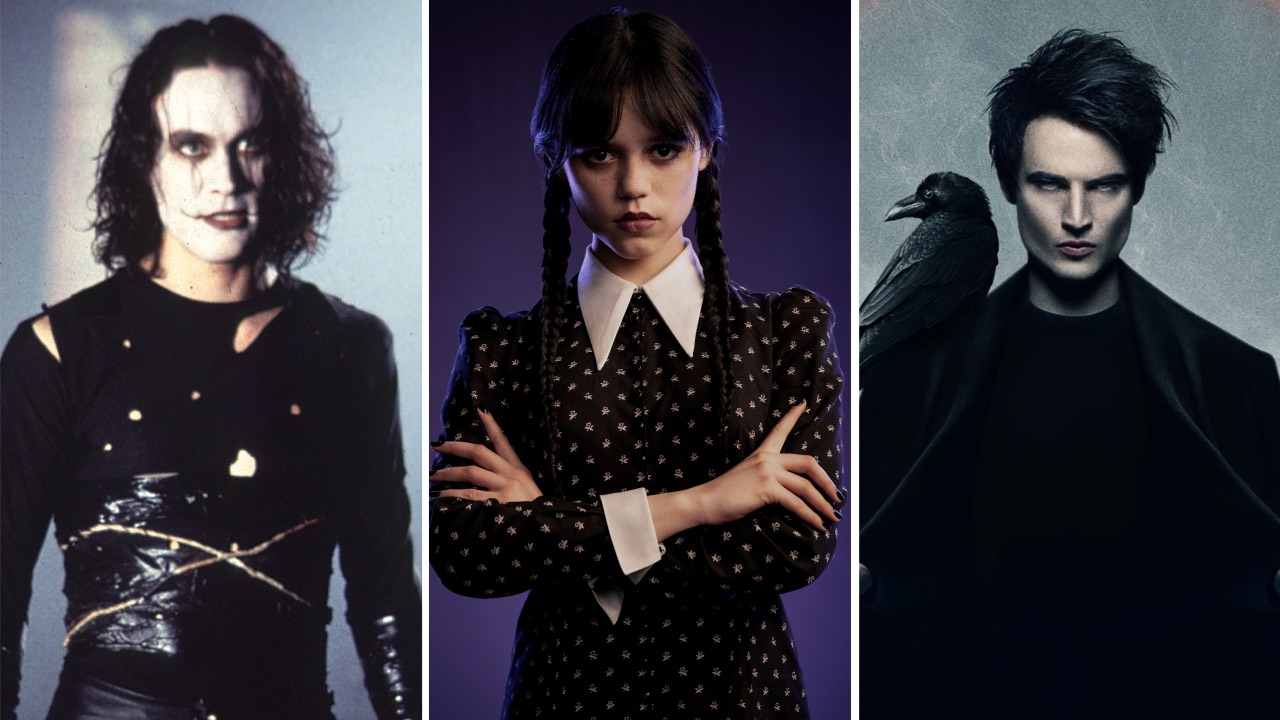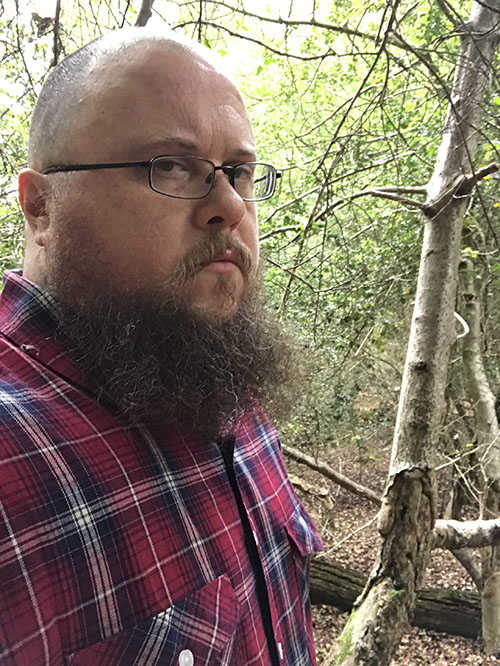Film and TV had an incalculable impact on the emergence of goth culture in the late 70s; by the early 90s, goth culture was having an incalculable impact on film and TV. Just occasionally these excitingly relatable figures would pop up: elegant nonconformists swathed in black, enjoying their morbid outlook and revelling in their outsider status. But which ones have struck the most powerful chord across generations of young goths? Turn off the light, settle back on your catafalque and enjoy the ten greatest goth icons of cinema and television.

Dracula
Just about every aspect of Bram Stoker’s titular vampire has come to inform goth lore. Whitby became the goth capital of the world after the evil Count shored up there in the 1897 novel, and just about every film interpretation has made its mark on goth culture, from the rodentlike ghoul of 1922’s Nosferatu to the top-hatted horndog of Francis Ford Coppola’s 1994 version. The first song ever written by the first goth band, Bela Lugosi’s Dead by Bauhaus, was a full-blooded love song to the Hungarian actor who became so associated with the role he was buried in his Dracula cloak.
Vampira
In 1953 Maila Nurmi attended a Hollywood costume party dressed as the as-yet-unnamed macabre matriarch from Charles Addams’ New Yorker cartoons. She was spotted by a local TV producer looking for someone to introduce late-night horror movies - then a brand-new concept. Although the job barely lasted a year, and was confined to the LA region, Vampira’s striking appearance and morbid humour made her an instant, immortal phenomenon, America’s first and best ‘glamour ghoul’. The Misfits wrote her titular song, The Cramps got her to introduce local live shows, and she even fronted garage punks Satan’s Cheerleaders on two mid-80s singles.
Morticia and Wednesday Addams
Charles Addams’ macabre matriarch finally got a name in 1964, when this brood of spooky oddballs got their own sitcom: The Addams Family, the ultimate epitome of the ‘people who think nasty things are nice’ trope that would forever inform goth aesthetics. It was Carolyn Jones’ Morticia who first nailed the concept most compellingly; daughter Wednesday had to wait until the 1991 movie adaptation to emerge as a crucial goth icon. On ‘60s TV she was a cute six-year-old, playing with spiders and decapitating dolls, while Christina Ricci’s death-obsessed adolescent sociopath became a wry archetype for a whole ‘90s teen subculture. Now Netflix show Wednesday is reintroducing this poker-faced heroine for a whole new generation.
Lydia Deetz
It took until 1988, in Tim Burton’s extraordinary horror comedy Beetlejuice, for Hollywood to offer us the first and best cinematic celebration of the goth as a subcultural phenomenon. When Winona Ryder’s sensitive, introverted teenager moves into a haunted house with her dysfunctional family, eyes up a spider and declares “I could live here”, a million moody youths welcomed a powerful kindred spirit into their black hearts. Lydia’s satisfied self-assessment, “I myself am strange and unusual”, served to empower a burgeoning alternative generation, only a few of whom felt betrayed when Lydia gets to smile and dance joyfully at the end.
The Sandman
“I was never goth,” Neil Gaiman tweeted in 2019 after posting a photo of himself aged 22 in a brown jumper and check shirt. Fair enough, but the best-loved protagonists in his epochal comic book series The Sandman - Dream (aka Morpheus, aka lots of things) and Death - assuredly were. In 2013 Gaiman blogged that “The original idea-model for Morpheus was Peter Murphy from Bauhaus”, while the appearance of Death was inspired by artist Mike Dringenberg’s goth maven friend, Cinamon Hadley. Essentially, ‘80s goth aesthetics had as profound an impact on The Sandman as The Sandman’s aesthetics had on ‘90s goth.
Eric Draven
The 1994 adaptation of James O'Barr’s beloved comic The Crow was already an oppressively dark movie, filmed almost entirely at night in the rain, telling the tale of a skinny rock guitarist risen from the grave to avenge his girlfriend’s rape and murder. But when star Brandon Lee was killed in a studio accident, the aura of tragic gloom became forever horrendously palpable. As if Draven’s white face paint, top-to-toe black leather and thwarted romantic melancholy didn’t already make him goth’s ultimate super-antihero, the soundtrack sealed the deal: Nine Inch Nails covered Joy Division, Rollins Band covered Suicide, and The Cure provided the character’s bespoke motivational theme tune.
Lisbeth Salander
The titular (anti)-heroine of Steig Larsson’s blockbusting novel The Girl With The Dragon Tattoo and subsequent movie adaptations is a study in goth cool: a pierced, tattooed, bisexual hacker with an introverted personality and a traumatic upbringing locked deep in her psyche (curiously Larsson said he based her on what he imagined beloved Scandinavian kids’ favourite Pippi Longstocking would be like as an adult). Rooney Mara and Claire Foy have both played her in English-language adaptations of the books in the Millennium series, but it‘s Noomi Rapace’s incarnation in the original, Swedish language version that remains the ultimate 21st century tech-goth poster girl.
The Hex Girls
1999 video Scooby Doo And The Witch’s Ghost introduced singer/guitarist Thorn, bassist/keyboardist Luna and drummer Dusk (voiced by the Go-Go’s co-founder Jane Wiedlin): a Wiccan pop-punk power trio of self-styled ‘eco-goths’, cranking out catchy tunes like Who Do Voodoo, Petrified Bride and Good Bad Girls. A bit of camp sub-Buffy fun, you might think, but in 2019 the Independent website ran a celebratory feature on the sociocultural significance of the Hex Girls, beginning with the line “In 1999, a fictional pop-rock band in a straight-to-VHS Scooby-Doo movie made every queer, goth and/or weirdo child feel seen”. So quite a legacy, then.
Richmond
Noel Fielding had already hinted at an affection for goth culture with his Mighty Boosh character Vince Noir, who used Goth Juice hairspray, made from the tears of The Cure’s Robert Smith. But as Richmond Felicity Avenal in The IT Crowd - a former corporate high-flyer whose career took a nosedive when he discovered Cradle Of Filth and black hair dye - he staked himself into the hearts of every goth with a sense of humour. Richmond briefly abandoned the lifestyle and launched Goth2Boss, to help ex-goths integrate into mainstream society, but after its inevitable failure he was mercifully back in black.
Nina Lucas
Coronation Street actress Mollie Gallagher won Best Serial Drama Performance at the National Television Awards in 2021 for her portrayal of troubled goth teen Nina in the long-running British TV soap, attacked with her boyfriend Seb in a storyline inspired by the murder of Sophie Lancaster. "Coronation Street covering this issue means such a huge amount to me,” Sophie’s mum Sylvia told the BBC. "We want alternative people to know that they shouldn't be putting up with this prejudice and intolerance, and they should report it." The Daily Mirror reported that “viewers were in tears” when Nina re-embraced her goth identity at Seb’s murder trial.

